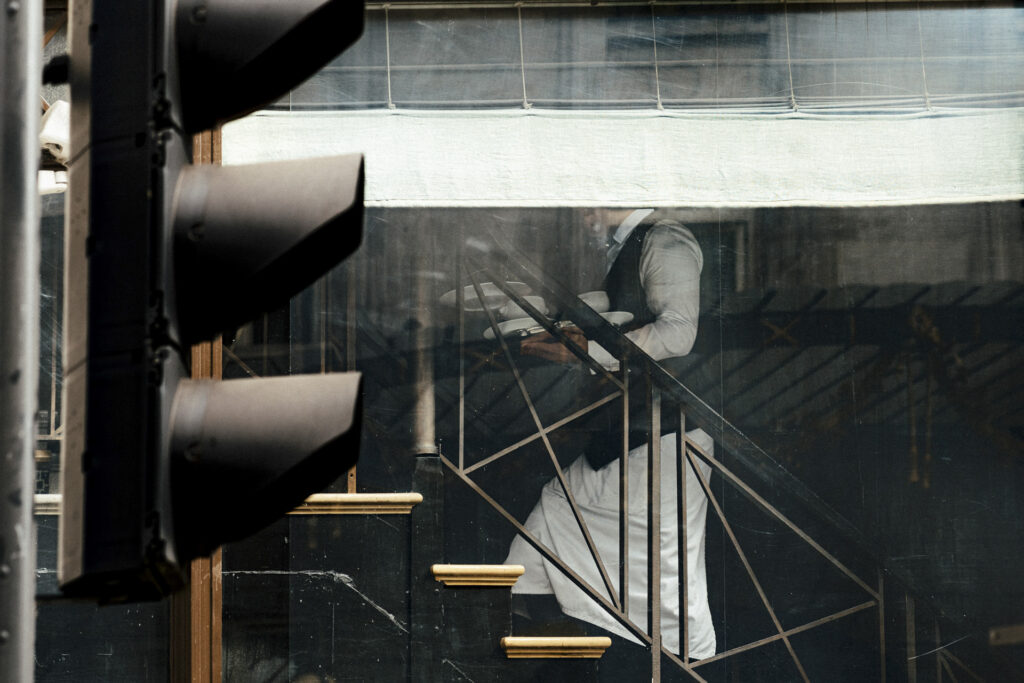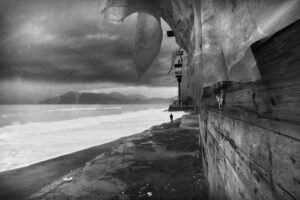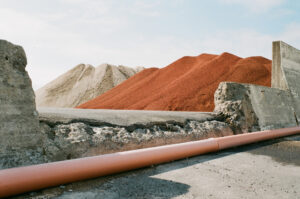
FOCUS ON
ANDREW JAMES CAMPBELL
Andrew James Campbell’s photos capture scenes on urban streets with never banal compositions and an aesthetic that transmits a hint of nostalgia for a more everyday life.
Forget about wide-angle lenses and scenes full of layers with different scenes, street photography in this case is full of minimalism and is capable of transmitting the photographer’s state of mind with his gaze.
Q Hi Andrew, it’s a pleasure to publish your work on Woofermagazine. Let’s start at the beginning, how did you get into photography?
A Photography is something that has been with me since I was young. I came from a rather creative family, so pursuing arts at school was encouraged. I spent hours in the darkroom at high school and during college, but in all honesty, I never took it seriously. As a teenager with a short attention span, I didn’t enjoy the tedious nature of analogue photography. A couple of years later, my mum bought me one of those early point-and-shoot digital cameras. It was difficult to get the photos off the memory card, but it finally sparked a curiosity. From then on, I always kept some sort of camera with me, but it wasn’t until just before the pandemic that I decided to take it seriously. Ironically, I now really enjoy the slow process of analogue photography.

Q Looking at your photos I can clearly see that you have a very personal style. I could say that you break the classic canon of street photography. Many times you take photos from afar but your compositions are always very interesting. How have you managed to reach this peculiar style?
A I’m not sure where it came from, but I feel the early years of studying composition in art and not wanting to disturb people may have influenced it. Initially, it took a bit of convincing to get me to even try street photography as I thought it was only about busy scenes and wide angles. Quite a bit later, I discovered the work of Saul Leiter and for the first time, I saw just how beautiful street photography could be. Whenever I have a creative block, his books are the ones I go to first.
Q How much time do you usually spend taking each photo?
A The actual photo itself, not a lot, as the moments are usually spontaneous and it’s always best to keep moving. But the images I’m most proud of were taken from repeatedly visiting the same streets and getting to know that area well. Once I had an idea of which corners to hover about and what type of clientele would frequent the restaurants and shops at those times, most things started to come together. I still think a lot of it was luck.
Q What are you looking for when you take a photo? In other words: When do you think a photo is good?
A I think it’s nice when a subject works in harmony with its environment from a slightly unorthodox viewpoint. The trick is to be quick enough to make the composition fit before the moment passes. Sometimes an idea works, sometimes it doesn’t. I’m still not entirely sure what makes a good photo, though. Many of my favourites I initially thought were failures, only to look at them months later and see them differently. You can be too harsh on your own work sometimes. If I still get the same excitement seeing an image years after I’ve taken it, then I think it’s a good one.

Q Who have been and/or continue to be the photographers who have inspired your photography?
A The wonderful thing about the rich history of photography is that I’m still hearing about photographic movements and seeing inspiring pieces created decades ago for the first time, so my influences are constantly shifting. I do feel more inspired by photographers from the mid-20th century though, in particular fashion photographers from that period who worked a lot on the street such as William Klein, Norman Parkinson and Saul Leiter. From more contemporary times, I’ve really been enjoying following the work of Sarah van Rij and Gustav Gräll’s unique take on life here in Sweden. Instagram has been a fun place for discovering new styles and ideas completely different to my own.
Andrew James Campbell links :
If you like this content please support the author + Woofermagazine and share it :





HOMAGE TO BERNARDO SOARES
Francisco Uceda guides us through Redhook, a neighborhood in New York City undergoing gentrification, where people are drawn silhouettes.

LIGHT/MASS
Photographer Owen Davies makes a visual thought on the enormous buildings scattered throughout the large cities of the United States.
